Lenovo ThinkPad E15 review – a typical industrial package for the office
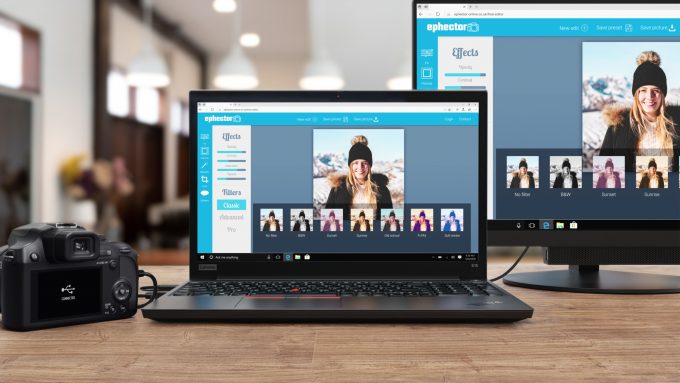 A part of Lenovo’s new naming program, the ThinkPad E15 feels like a spiritual successor to the ThinkPad E590. Perhaps not only spiritual, given the almost identical look they share. Now, the new model features a fingerprint reader, embedded onto the power button. Additionally, the Comet Lake processors from Intel make an appearance. Not only that, but you can configure this model with up to the six-core Core i7-10710U. However, this will certainly creep the price up.
A part of Lenovo’s new naming program, the ThinkPad E15 feels like a spiritual successor to the ThinkPad E590. Perhaps not only spiritual, given the almost identical look they share. Now, the new model features a fingerprint reader, embedded onto the power button. Additionally, the Comet Lake processors from Intel make an appearance. Not only that, but you can configure this model with up to the six-core Core i7-10710U. However, this will certainly creep the price up.
Now, Lenovo is generally known for the high standard they keep with the ThinkPad series of devices. We hope that this is not changed with the E15. In order to pump up the versatility, the manufacturer has given the laptop a 1080p IPS display option, speakers tuned by Harman, and some much-needed privacy enhancements – a TPM chip, as well as privacy shutter on the camera.
You can check the prices and configurations in our Specs System: https://laptopmedia.com/series/lenovo-thinkpad-e15/
Contents
Specs Sheet
- HDD/SSD
- まで 4000GB SSD + まで 2000GB HDD
- ラム
- up to 32GB
- OS
- Windows 10 Pro, Windows 10 Home, Windows 11 Pro, No OS
- バッテリー
- 45Wh, 3-cell
- 寸法
- 368 x 245 x 18.9 mm (14.49" x 9.65" x 0.74")
- 重量
- 1.90 kg (4.2 lbs)
- ポートと接続性
- 1x USB Type-C
- 3.2 Gen 2 (10 Gbps), Power Delivery (PD), DisplayPort
- 1x USB Type-A
- 3.2 Gen 1 (5 Gbps), Sleep and Charge
- 1x USB Type-A
- 3.2 Gen 1 (5 Gbps)
- 1x USB Type-A
- 2.0
- HDMI
- 1.4b
- イーサネット LAN
- Wi-Fi
- 802.11ac
- ブルートゥース
- 5.0
- オーディオジャック
- combo audio / microphone jack
- 特徴
- 指紋リーダー
- optional
- 対戦相手
- HD
- バックライト付きキーボード
- optional
- メモリタイプ
- スピーカー
- 2x 2W
- 光学ドライブ
- セキュリティロックスロット
All Lenovo ThinkPad E15 コンフィグレーション
What’s in the box?
Inside the package, we found a 65W power adapter with USB Type-C connection, as well as some paper manuals, and the laptop, itself.
Design and construction
In terms of construction, Lenovo has done a good job of reducing the profile and the weight of this device. The measurements now add up for 18.9mm in thickness and 1.90 kg of weight. Overall, the laptop is made out of plastic, while the lid is aluminum. We observed some twisting on the chassis when you force it, but thankfully, there are no squeaks, and this might have something to do with the structural integrity of the notebook. As the material would absorb some of the force in twisting motion, rather than transferring it directly to the components inside.
Sadly, no one-handed lid opening here. As we mentioned there is a camera with a privacy shutter, housed in the top bezel. The side ones are thin enough, so the laptop looks fresh in 2020, as well.
Next, there is the keyboard. Traditionally, it provides a great typing experience, thanks to a rather long key travel and clicky but quiet feedback – something office users will appreciate. Despite the full-sized NumberPad section, we have one complaint with the unit – the “Page Up” and “Page Down” keys are too close to the left and right “arrow” keys, which will result in occasional jumps to the top or bottom of a Web page.
As a ThinkPad, it would be criminal not to feature a Red Nipple. Yep, it still has it and the dedicated buttons above the touchpad are here to stay, as well. As of the touchpad, itself – it is a nice unit that supports Multi-touch gestures but the matte finish doesn’t help it in the gliding experience. By the way, there is a quick and accurate fingerprint reader embedded in the Power button.
Lastly, turn the laptop around, and you’ll see a pretty substantial ventilation grill. It is bundled with a pair of speaker cutouts, while the exhaust is happening from in between the base and the display.
Ports
On the left side of the notebook, you can find a USB Type-C 3.1 (Gen. 1) port, which is used for charging and can output a DisplayPort signal. Then, there are two USB Type-A 3.1 (Gen. 1) ports, an HDMI 1.4b connector, and an audio jack. The port selection on the right is far more modest, though – an RJ-45 connector and a USB Type-A 2.0.
Disassembly, upgrade options and maintenance
In order to get inside of the ThinkPad E15, you need to undo a total of 8 Phillips-head screws. Interestingly, all of them stay attached to the bottom panel afterwards. Then, just pry the panel with a plastic tool.
In terms of cooling, there is a single, rather thin heat pipe. The other components include a fan, and a heat sink, which is also smaller than what we’re used to seeing.
Upgradability-wise, we feel that this notebook is more than good – an M.2 slot with PCIe x4 and SATA support, as well as a 2.5″ SATA drive bay. In terms of memory – there is only one RAM SODIMM slot – a downgrade from the ThinkPad E590. Nevertheless, it supports up to 16GB of DDR4 memory working at 2666 MHz.
Finally, there is a 45Wh battery.
Display quality
Lenovo ThinkPad E15 has a Full HD IPS panel with a model number BOE NV156FHM-N48. Its diagonal is 15.6″ (39.62 cm), and the resolution 1920 х 1080 pixels. The screen ratio is 16:9, and we are looking at a pixel density of – 142 ppi, and a pitch of 0.18 х 0.18 mm. The screen turns into Retina when viewed at distance equal to or greater than 60cm (24″) (from this distance one’s eye stops differentiating the separate pixels, and it is normal for looking at a laptop).

Viewing angles are comfortable. We offer images at 45° to evaluate image quality.

The measured maximum brightness of 272 nits in the middle of the screen and 256 nits as an average for the whole area, with a maximum deviation of 11%. The Correlated Color Temperature on a white screen is 5800K – a little warmer than the sRGB standard of 6500K.
In the illustration below you can see how the display performs from a uniformity perspective. In other words, the leakage of light from the light source.
Values of dE2000 over 4.0 should not occur, and this parameter is one of the first you should check if you intend to use the laptop for color-sensitive work. The contrast ratio is good – 1030:1.
To make sure we are on the same page, we would like to give you a little introduction to the sRGB color gamut and the Adobe RGB. To start, there’s the CIE 1976 Uniform Chromaticity Diagram that represents the visible specter of colors by the human eye, giving you a better perception of the color gamut coverage and the color accuracy.
Inside the black triangle, you will see the standard color gamut (sRGB) that is being used by millions of people in HDTV and on the web. As for the Adobe RGB, this is used in professional cameras, monitors, etc for printing. Basically, colors inside the black triangle are used by everyone and this is the essential part of the color quality and color accuracy of a mainstream notebook.
Still, we’ve included other color spaces like the famous DCI-P3 standard used by movie studios, as well as the digital UHD Rec.2020 standard. Rec.2020, however, is still a thing of the future and it’s difficult for today’s displays to cover that well. We’ve also included the so-called Michael Pointer gamut, or Pointer’s gamut, which represents the colors that naturally occur around us every day.
The yellow dotted line shows Lenovo ThinkPad E15’s color gamut coverage.
Its display covers 51% of the sRGB/ITU-R BT.709 (web/HDTV standard) in CIE1976.
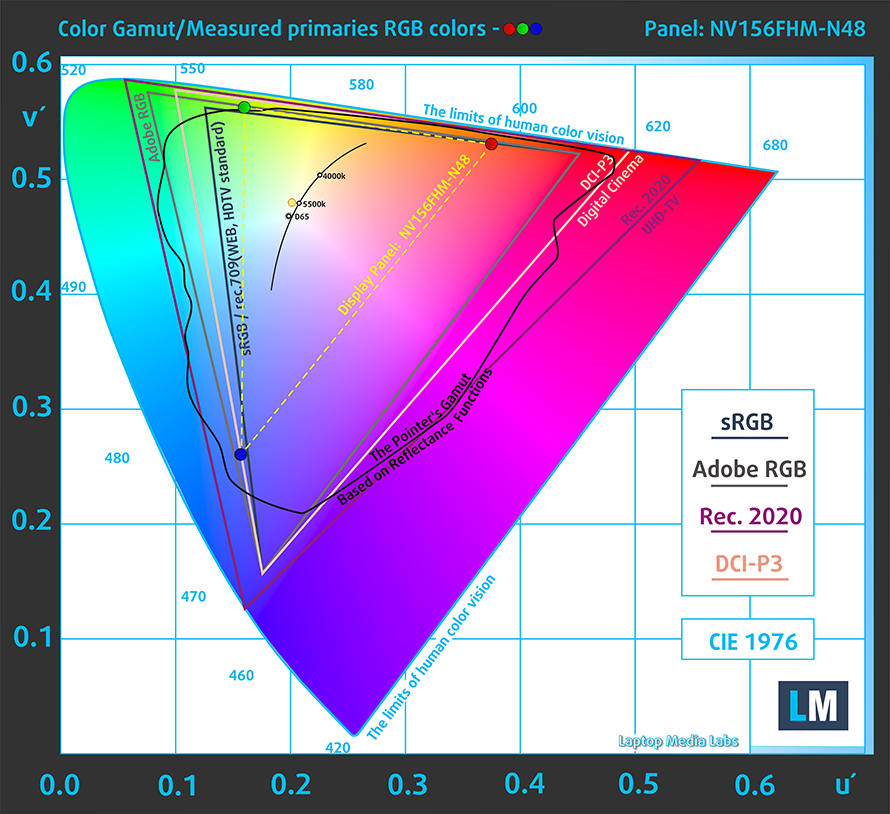
Our “Design and Gaming” profile delivers optimal color temperature (6500K) at 140 cd/m2 luminance and sRGB gamma mode.
We tested the accuracy of the display with 24 commonly used colors like light and dark human skin, blue sky, green grass, orange, etc. You can check out the results at factory condition and also, with the “Design and Gaming” profile.
Below you can compare the scores of Lenovo ThinkPad E15 with the default settings (left), and with the “Gaming and Web design” profile (right).

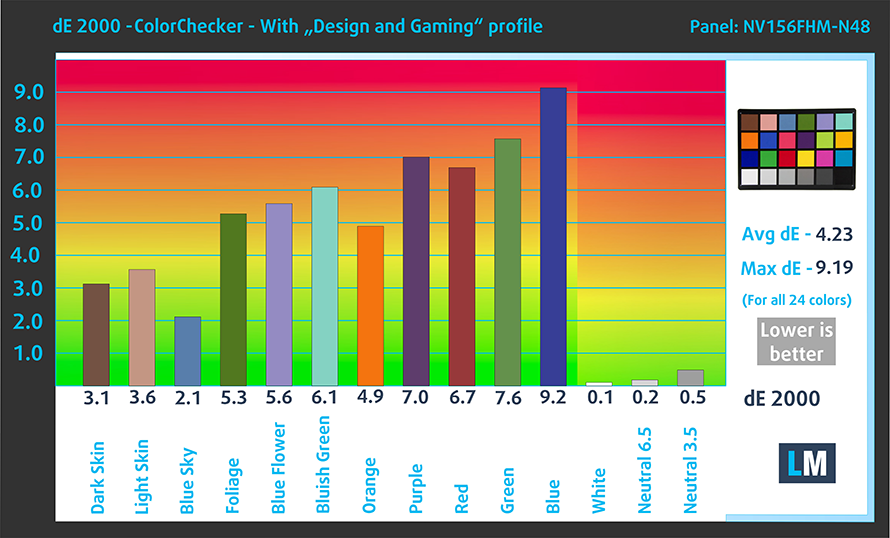
The next figure shows how well the display is able to reproduce really dark parts of an image, which is essential when watching movies or playing games in low ambient light.
The left side of the image represents the display with stock settings, while the right one is with the “Gaming and Web Design” profile activated. On the horizontal axis, you will find the grayscale and on the vertical axis – the luminance of the display. On the two graphs below you can easily check for yourself how your display handles the darkest nuances but keep in mind that this also depends on the settings of your current display, the calibration, the viewing angle, and the surrounding light conditions.
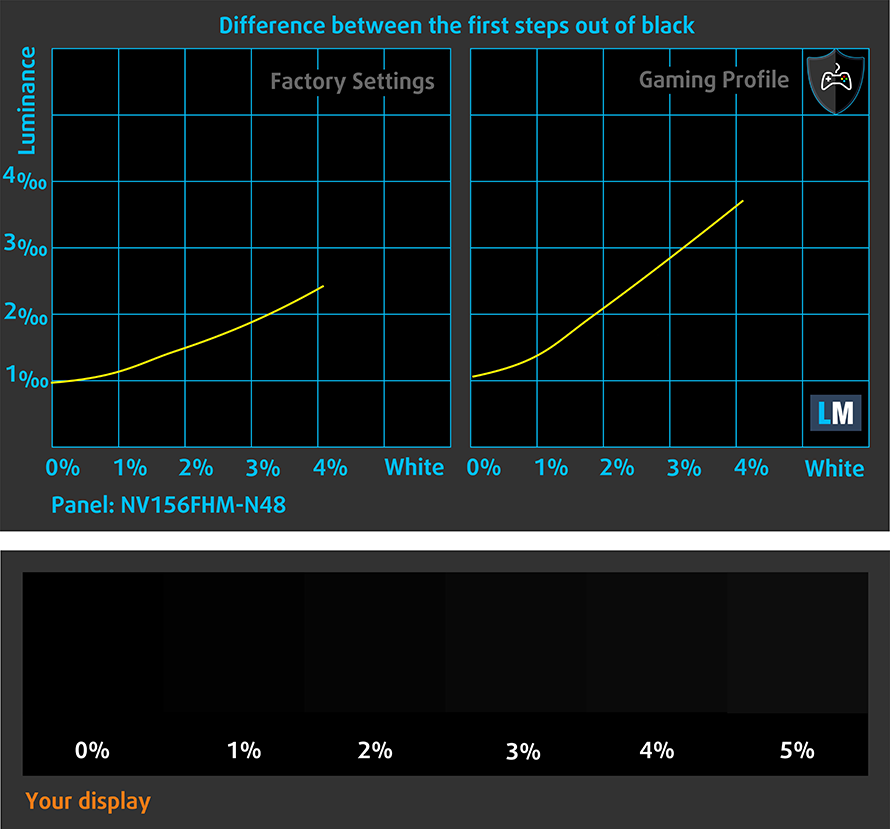
Response time (Gaming capabilities)
We test the reaction time of the pixels with the usual “black-to-white” and “white-to-black” method from 10% to 90% and vice versa.
We recorded Fall Time + Rise Time = 34 ms – a pretty slow panel.
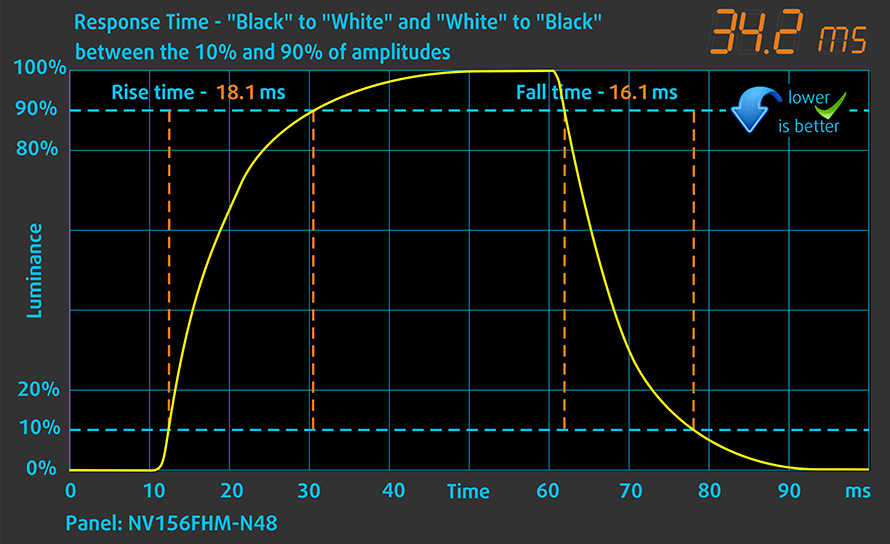
PWM (Screen flickering)
Pulse-width modulation (PWM) is an easy way to control monitor brightness. When you lower the brightness, the light intensity of the backlight is not lowered, but instead turned off and on by the electronics with a frequency indistinguishable to the human eye. In these light impulses, the light/no-light time ratio varies, while brightness remains unchanged, which is harmful to your eyes. You can read more about that in our dedicated article on PWM.
Lenovo ThinkPad E15’s display doesn’t use PWM only at maximum brightness. Additionally, the flickerings are with a very low frequency – 1250 Hz, which makes the display uncomfortable and possibly harmful for your eyes. Thankfully, our Health-Guard profile fixes that.
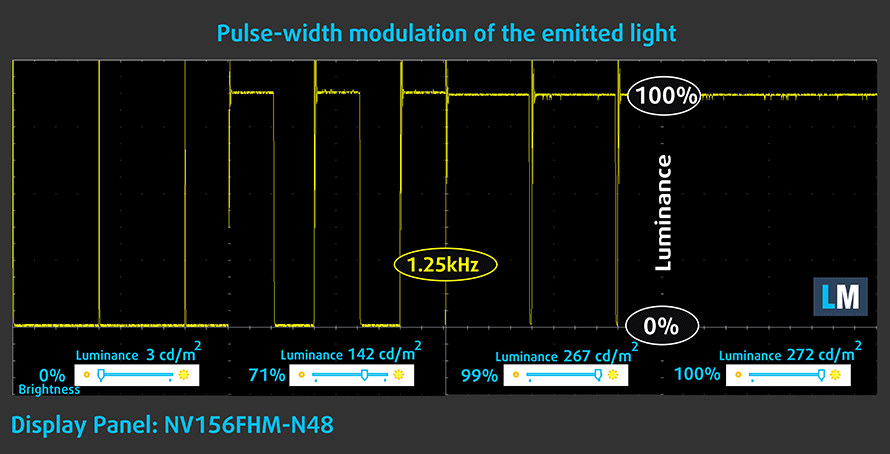
Blue light emissions
Installing our Health-Guard profile not only eliminates PWM but also reduces the harmful Blue Light emissions while keeping the colors of the screen perceptually accurate. If you’re not familiar with the Blue light, the TL;DR version is – emissions that negatively affect your eyes, skin, and your whole body. You can find more information about that in our dedicated article on Blue Light.
Conclusion
Lenovo ThinkPad E15’s display has an IPS panel with a Full HD resolution, comfortable viewing angles, and good contrast ratio. However, this is where the positives about it pretty much end. Its disadvantages include poor color coverage and accuracy, and most notably – PWM usage, across all brightness levels, apart from the maximum. Of course, our Health-Guard profile completely resolves this issue.
Buy our profiles
Since our profiles are tailored for each individual display model, this article and its respective profile package are meant for Lenovo ThinkPad E15 configurations with 15.6″ FHD IPS BOE NV156FHM-N48.
*Should you have problems with downloading the purchased file, try using a different browser to open the link you’ll receive via e-mail. If the download target is a .php file instead of an archive, change the file extension to .zip or contact us at [email protected].
Read more about the profiles HERE.
ここでは、すべてのCPUに搭載されているCPUの価格/性能差を確認することができます。

オフィスワーク
オフィスワークは、ほとんどの時間をテキストや表を見たり、ただネットサーフィンをしたりしているユーザーが使用するべきです。このプロファイルは、フラットなガンマカーブ(2.20)、ネイティブな色温度、知覚的に正確な色を維持することで、より鮮明で明瞭な色を提供することを目指しています。

デザインとゲーム
このプロファイルは、色を専門的に扱うデザイナーに向けたもので、ゲームや映画でも使用されています。Design and Gamingは、ディスプレイパネルを限界まで引き出し、WebやHDTV用のsRGB IEC61966-2-1規格の白点D65で可能な限り正確な色を実現しています。

ヘルスガード
ヘルスガードは、有害なパルス幅変調(PWM)を除去し、私たちの目や体に影響を与えるネガティブブルーライトを低減します。それはすべてのパネルのためにカスタマイズされているので、それは知覚的に正確な色を維持するために管理します。ヘルスガードは紙をシミュレートするので、目への圧力が大幅に軽減されます。
3 つのプロファイルすべてを 33% 割引で入手
Sound
Lenovo ThinkPad E15’s Harman-tuned speakers produce a loud sound with relatively good quality, as there are deviations throughout the entire frequency range.

Drivers
All of the drivers and utilities for this notebook can be found here: https://pcsupport.lenovo.com/us/en/products/laptops-and-netbooks/thinkpad-edge-laptops/thinkpad-e15-type-20rd-20re/downloads/driver-list
Battery
Now, we conduct the battery tests with Windows Better performance setting turned on, screen brightness adjusted to 120 nits, and all other programs turned off except for the one we are testing the notebook with. Interestingly, the ThinkPad E15 performs worse than its predecessor, in the battery life tests. And this is with the same battery – shame. Anyways, we got exactly 8 hours and 20 minutes of both Web browsing and video playback.
実際の状況をシミュレートするために、70 以上の Web サイトを自動的に Web ブラウジングする独自のスクリプトを使用しました。
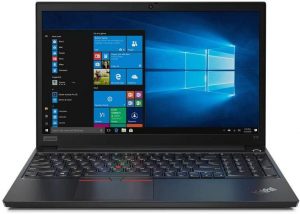
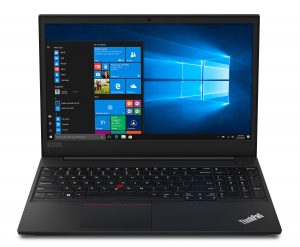
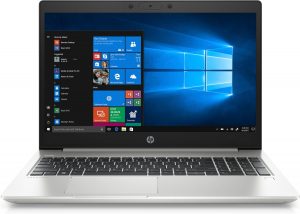

このようなすべてのテストでは、HD の同じビデオを使用します。




CPU options
The ThinkPad E15 comes with a healthy pack of processors. You get a choice of pretty much every Comet Lake processor, starting from the Core i3-10110U (2c/4t), and going through the Core i5-10210U (4c/8t), Core i7-10510U (4c/8t), and maxing out with the flagship for this processor family – the Core i7-10710U (6c/12t).
結果はCinebench 20のCPUテストによるものです(スコアが高いほど優れています)
結果はPhotoshopベンチマークテストの結果です(スコアが低いほど良い)
Lenovo ThinkPad E15 CPUのバリエーション
ここでは、市場に出回っている [シリーズ] モデルで見つけることができる CPU 間のおおよその比較を見ることができます。 このようにして、どの [シリーズ] モデルが費用対効果が最も高いかを自分で決めることができます。
注:この表は最も安い異なるCPUの構成を示すので、ノートパソコンの名前/CPUをクリックして、これらのノートパソコンの他の仕様が何であるかを確認する必要があります。
結果はCinebench R23のCPUテストによるもの(スコアが高いほど優れています)
結果はPhotoshopベンチマークテストの結果です(スコアが低いほど良い)
GPU options
On the other side, the graphics card options provide “only” three options – the integrated Intel UHD Graphics, the AMD Radeon 625 (2GB GDDR5), and the AMD Radeon RX 640 (2GB GDDR5).
結果は3DMark: Time Spy (Graphics)ベンチマークによるものです(スコアが高いほど優れています)
結果は3DMark: Fire Strike (Graphics)ベンチマークによるものです(スコアが高いほど優秀です)
結果はUnigine Superpositionベンチマークによるものです(スコアが高いほど優秀です)
Gaming tests

| CS:GO | HD 1080p, Low (Check settings) | HD 1080p, Medium (Check settings) | HD 1080p, MAX (Check settings) |
|---|---|---|---|
| Average FPS | 33 fps | – fps | – fps |

| DOTA 2 | HD 1080p, Low (Check settings) | HD 1080p, Normal (Check settings) | HD 1080p, High (Check settings) |
|---|---|---|---|
| Average FPS | 58 fps | 29 fps | – fps |
Temperatures and comfort
Max CPU load
In this test we use 100% on the CPU cores, monitoring their frequencies and chip temperature. The first column shows a computer’s reaction to a short load (2-10 seconds), the second column simulates a serious task (between 15 and 30 seconds), and the third column is a good indicator of how good the laptop is for long loads such as video rendering.
Average core frequency (base frequency + X); CPU temp.
| Intel Core i5-10210U (15W TDP) | 0:02 – 0:10 sec | 0:15 – 0:30 sec | 10:00 – 15:00 min |
|---|---|---|---|
| Lenovo ThinkPad E15 | 2.47 GHz (B+54%) @ 76°C | 2.50 GHz (B+56%) @ 91°C | 1.97 GHz (B+23%) @ 79°C |
| HP Probook 450 G7 | 2.54 GHz (B+59%) @ 59°C | 2.12 GHz (B+33%) @ 67°C | 1.81 GHz (B+13%) @ 72°C |
| HP Probook 440 G7 | 2.68 GHz (B+68%) @ 59°C | 2.68 GHz (B+68%) @ 67°C | 2.20 GHz (B+38%) @ 72°C |
| Lenovo ThinkBook 15-IML | 3.08 GHz (B+93%) @ 73°C | 3.00 GHz (B+88%) @ 82°C | 2.55 GHz (B+59%) @ 80°C |
| Lenovo ThinkPad L13 | 3.04 GHz (B+90%) @ 97°C | 2.10 GHz (B+31%) @ 97°C | 2.12 GHz (B+33%) @ 79°C |
| ASUS ZenBook Duo UX481 | 3.26 GHz (B+104%) @ 94°C | 2.77 GHz (B+73%) @ 98°C | 2.06 GHz (B+29%) @ 71°C |
| Dell Vostro 5590 | 3.50 GHz (B+119%) @ 94°C | 2.68 GHz (B+68%) @ 97°C | 2.36 GHz (B+48%) @ 79°C |
Interestingly, Lenovo seems to have got it wrong in the cooling department, as well. Comparing it to the similarly-priced ThinkBook 15, the ThinkPad E15 lacks quite a lot behind. While, it shows better performance than the ProBook 450 G7, which is the true competition here, the temperatures are noticeably higher.
Comfort during full load
Thankfully, the device is pretty quiet during load, and while the maximum temperature of 40C on the keyboard seems warm, it is definitely not too hot to the touch.


Verdict
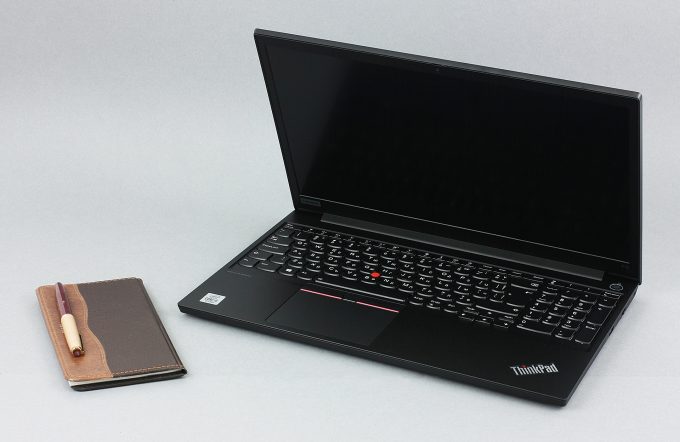 If we look at the picture from the perspective of a business owner, or a person, who needs a laptop mainly for e-mails, word-processing applications, or even developing work, the entire package is not that bad. It has a great keyboard, reasonably good touchpad, and quite a wide I/O selection. Moreover, you can fit a super-fast PCIe x4 drive in the M.2 slot and get mesmerizing boot and load times, or you can fit a huge 2.5″ SATA drive for backup and storage.
If we look at the picture from the perspective of a business owner, or a person, who needs a laptop mainly for e-mails, word-processing applications, or even developing work, the entire package is not that bad. It has a great keyboard, reasonably good touchpad, and quite a wide I/O selection. Moreover, you can fit a super-fast PCIe x4 drive in the M.2 slot and get mesmerizing boot and load times, or you can fit a huge 2.5″ SATA drive for backup and storage.
Sure, the older model supported 32GB via a dual-channel link, and it is petty that this one is limited to 16GB in a single-channel mode, but at the end of the day, it is still replaceable, right?
In terms of display, the Lenovo ThinkPad E15 is equipped with an IPS panel with a Full HD resolution, comfortable viewing angles and good contrast ratio. However, this is where the positives about it pretty much end. Its disadvantages include poor color coverage and accuracy, and most notably – PWM usage, across all brightness levels, apart from the maximum. Of course, our Health-Guard profile completely resolves this issue.
Additionally, we got a worse battery life, when compared to the ThinkPad E590, and especially, compared to the ProBook 450 G7. However, thanks to the better CPU utilization, the ThinkPad E15 would be a better choice for high-intensive tasks.
Pros
- Decent upgradability with PCIe x4 drive support
- Backlit, spill-resistant keyboard, equipped with the Nipple
- Wide viewing angles and good contrast ratio
- Optional fingerprint reader
- USB Type-C charging
Cons
- Covers only 52% of sRGB
- Uses harmful PWM for all brightness levels, except the maximum (our Health-Guard profile fixes the issue)
- Lacks an SD card reader
- A downgrade in battery life and maximum RAM supported, compared to its predecessor
You can check the prices and configurations in our Specs System: https://laptopmedia.com/series/lenovo-thinkpad-e15/
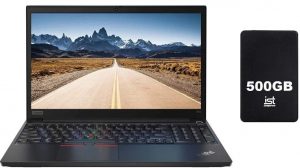


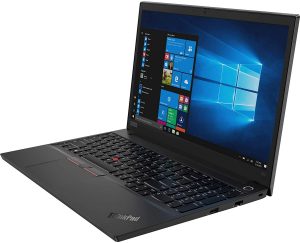
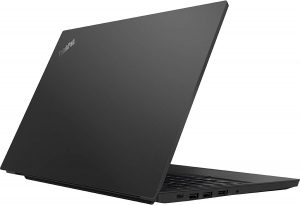
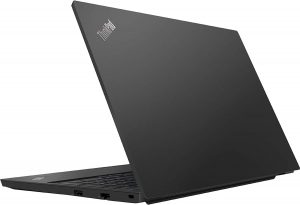
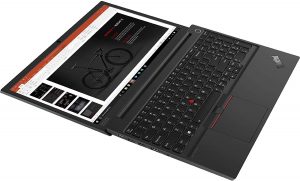
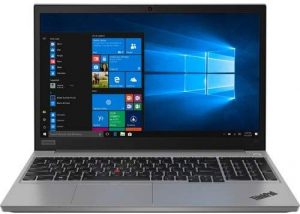
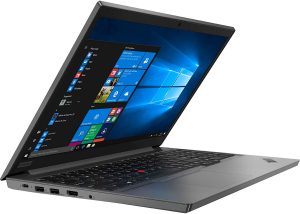

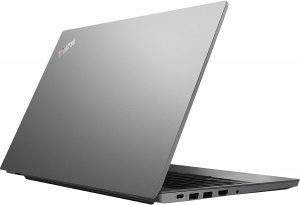
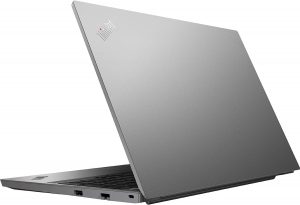
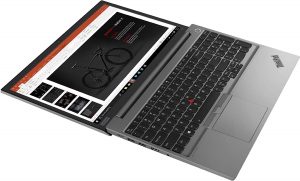
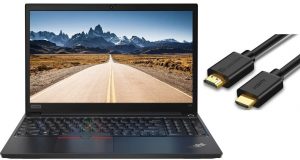
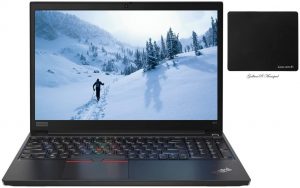

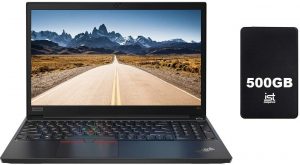
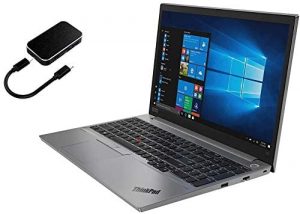
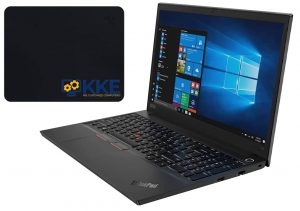
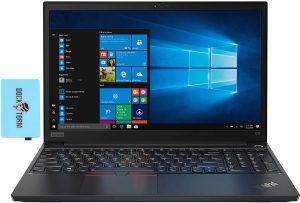
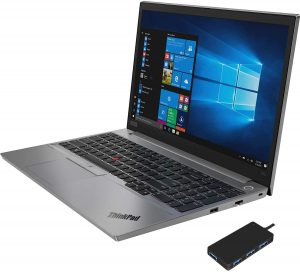
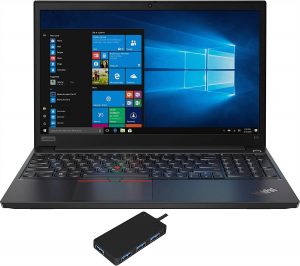
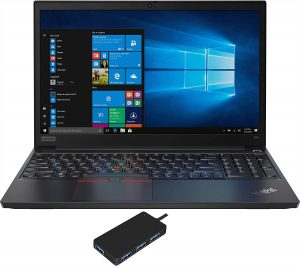
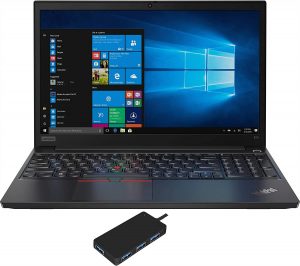


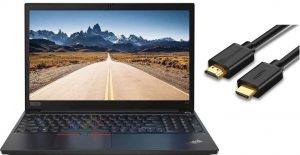
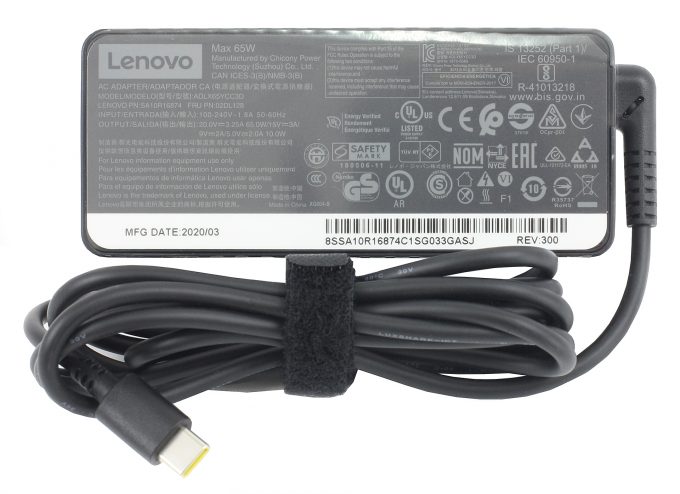
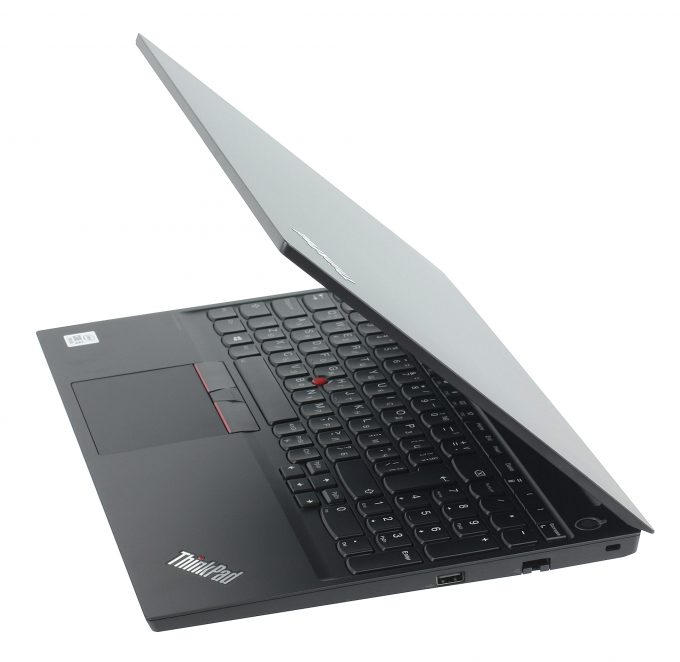
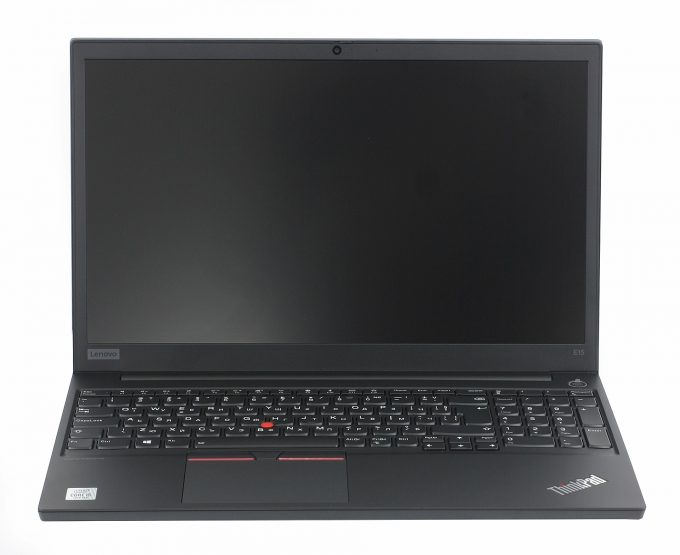
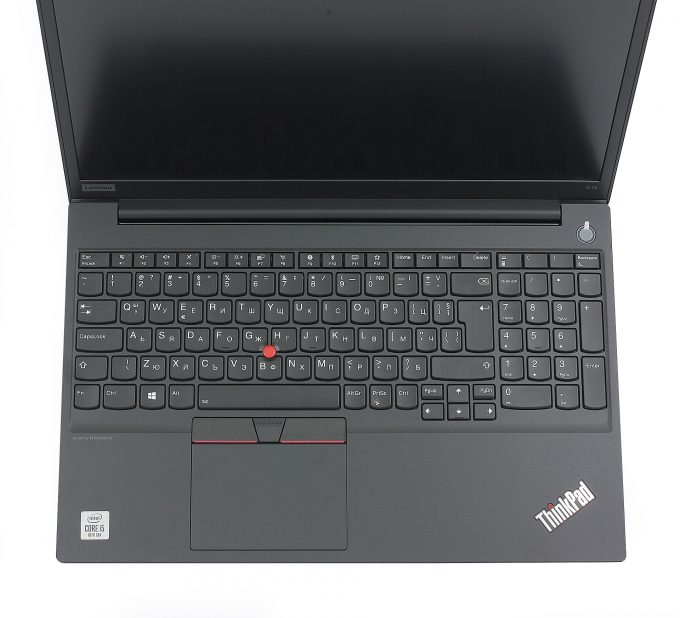
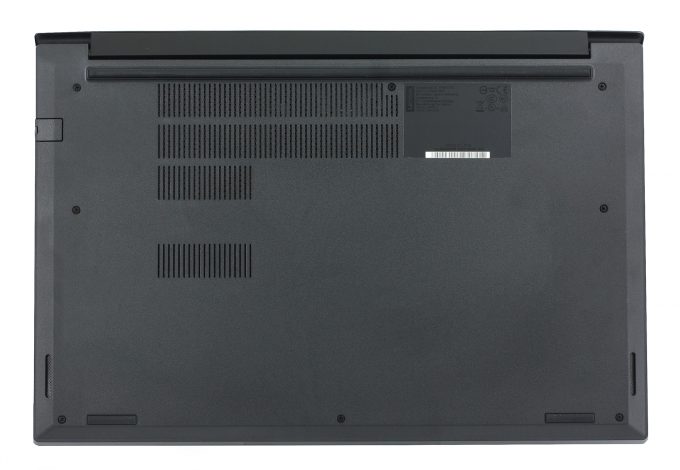


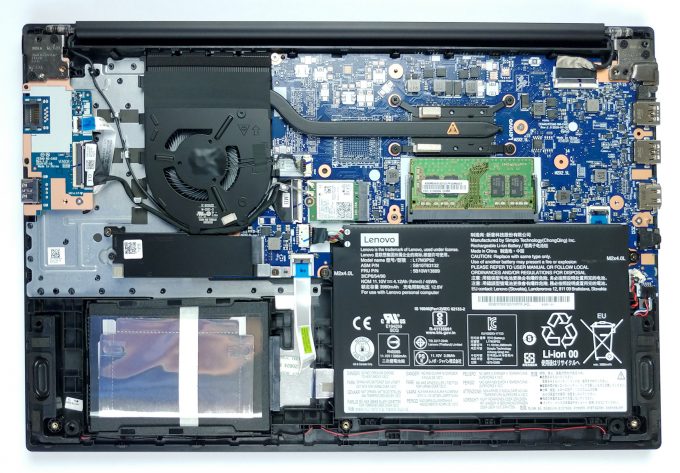

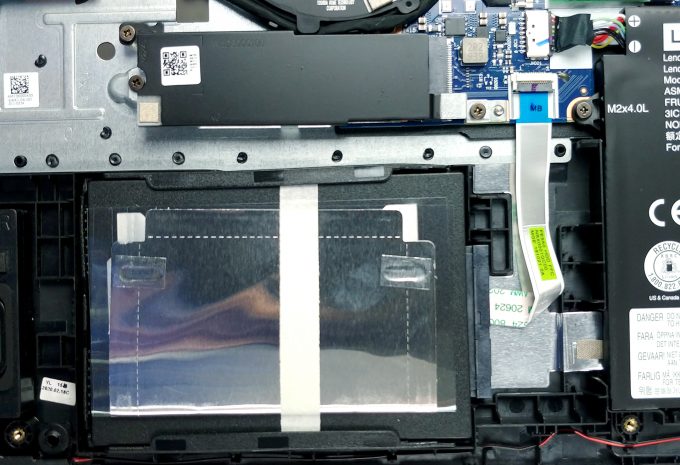

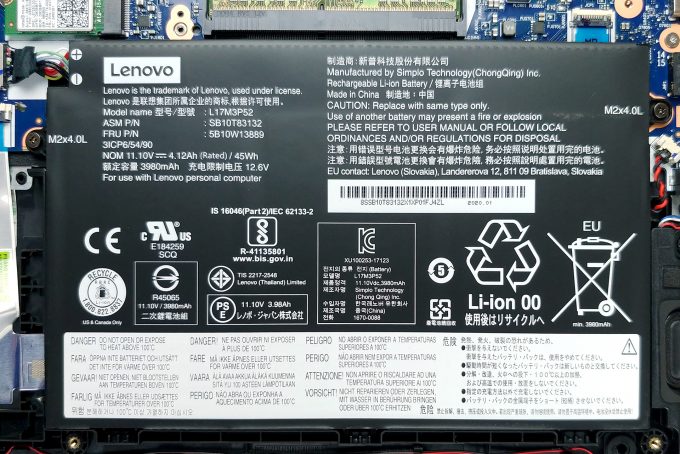


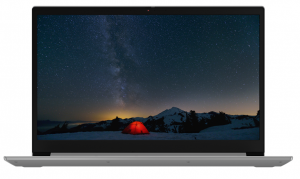
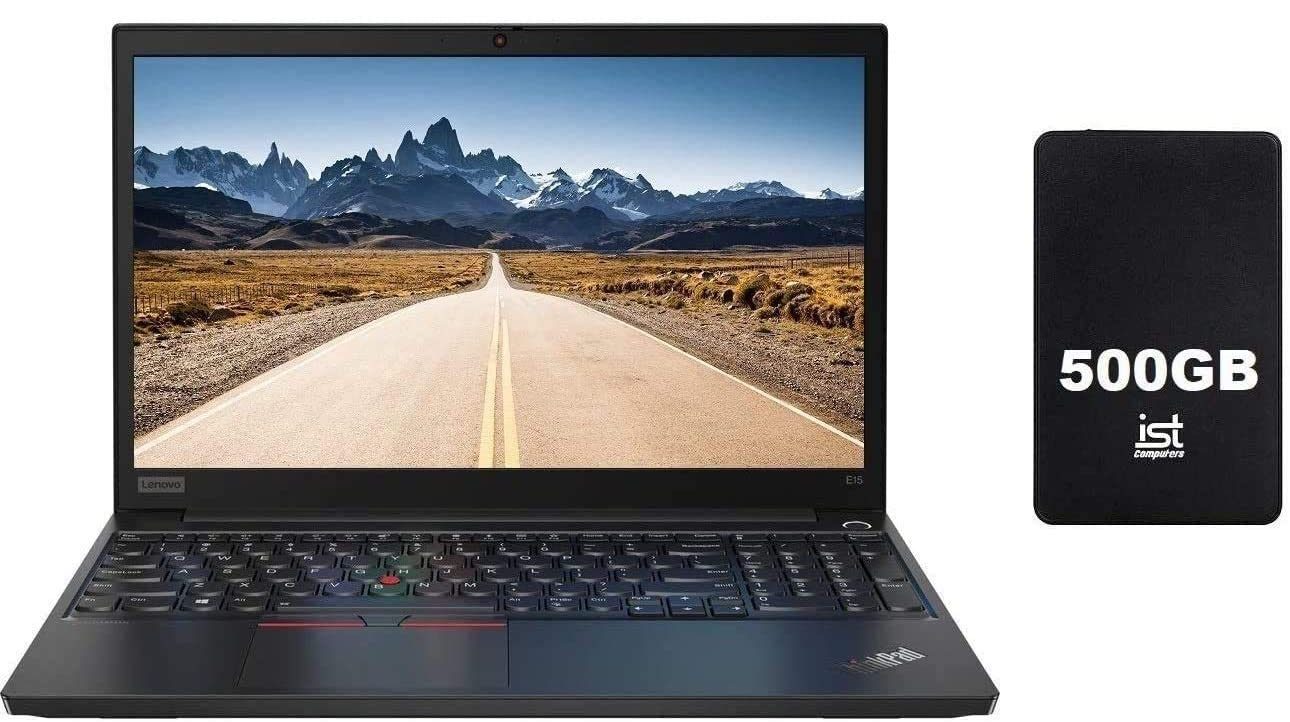








What SSD drives would be used to upgrade the i7 10th gen ? would this do ?
https://www.amazon.com/Corsair-Force-MP510-960GB-CSSD-F960GBMP510B/dp/B084ZWC796/ref=sr_1_4?dchild=1&keywords=ssd+nvme+Corsair+Force+Series&qid=1591170930&sr=8-4
Are there specifc SSDs for this machine first time user came with a normal HDD 1tb?
Also about the slot in your video there was a housing to the SSD would that have to be purchased?